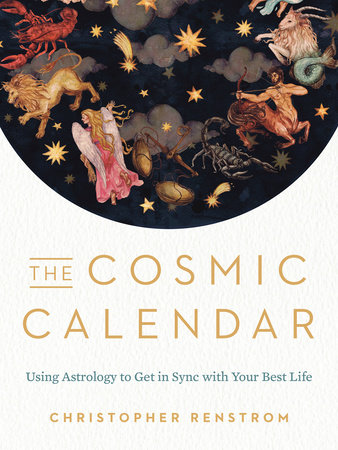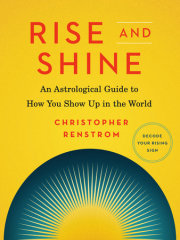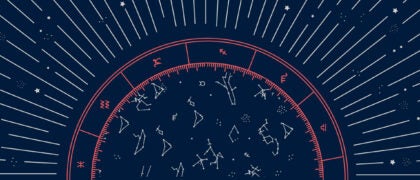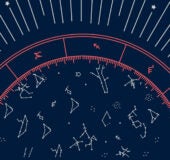INTRODUCTION
In 46 BC Julius Caesar changed the world. He had been invited to a dinner party on Queen Cleopatra’s barge and found himself seated next to one of her court astronomers, Sosigenes. The two men became absorbed in conversation and were inseparable all night. The discussion was about calendars. The Roman calendar had been a mess for decades. It was based on the Moon, so intercalary months needed to be added every eight years in order to align it with the seasons. Although lunar calendars were commonplace throughout the Mediterranean, Roman priests had been adding and subtracting months willy-nilly to extend the terms of politicians in office they favored and shorten the terms of those they disliked. Indeed, their manipulation of time was wreaking havoc on shipping, commerce, and tax collecting.
Sosigenes suggested switching over to the Egyptian calendar, which was based on the Sun. Centuries earlier the Egyptians had calculated that it took the Sun 3651/ 4days to return to the place in the sky where it was at the spring equinox. He demonstrated to Caesar that by dividing the year into twelve months— one month of 30 days alternating with another of 31—he could create a consistent year of 366 days and then reduce February by one more day in order to sync the calendar to the Sun. That way, instead of having to add or subtract an entire month every eight years, all Caesar had to do was add one day to February once every four years. This was the origin of the Julian calendar— named after Julius Caesar, of course— and it standardized timekeeping throughout the republic. Sundials and obelisks (both Egyptian inventions) soon became all the rage as Roman citizens were able to clock for themselves the time of day, month, and year. Moreover, this change of calendars gave birth to Western astrology— which had been based on the Moon since the twilight days of Babylon and would, from Julius Caesar on, be based on the blazing Sun.
Your birth chart is a calendar. One that’s unique to you because it’s a picture of the heavens at the moment of your birth. You can think of it as a screenshot of the sky— your sky— and this individualized star map will guide you throughout your entire life. It tells you when you are in season or out, and when’s a good time to start a venture or think better of it; it shows you grace periods where you can breeze right past obstacles and it gives you a heads‑up on future rough patches where you can expect resistance. And like the calendar, this can all be done according to the Sun— which is why it’s so important to know where the Sun is in your birth chart. Not everyone was born with the Sun shining overhead. Many of us were born when the Sun had already set. People born in the early- morning hours aren’t going to be like people born in the late afternoon any more than people born in the middle of autumn are going to have the same outlook on life as those born in the spring. This book will also describe your individual elemental temperament as depicted by the planets in your birth chart. This will be easy for you to understand because everything relates back to the Sun. The Sun represents you in your birth chart, and we will be using it as the “You Are Here” planet throughout this book.
How to Use This Book
You will need a copy of your birth chart and for that you will need to know your birthday and year, birth time, and birthplace. You can download a copy of your birth chart from my website: RulingPlanets.com.
If you don’t know your birth time, then use 12 PM. Astrologers often use noon as a default time because it still gives a general idea of where the Moon is. You may not be able to distinguish if you’re a day or night birth, but at least you’ll get a list of the planets for your birthday and that will still allow you to use this book.
1. Identify your Sun sign (you can do this by looking up your birthday in this book)
2. Find your season: Are you spring, summer, autumn, or winter?
3. What’s your mode: Are you an unstoppable force? An immovable object? Or are you the one trying to make an impossible situation work?
4. Are you a day or night birth? This is significant because if you’re a nighttime birth, then the Moon is going to be just as important as the Sun in your chart—maybe even more so.
5. What’s your elemental makeup? This is what really unpacks the birth chart. The four elements— water, earth, air, and fire— describe the cornerstones of your personality: your emotional life, material welfare, social skills, and spiritual beliefs. Based on the seasons, the four elements are rarely evenly distributed in a birth chart, and how they work with (and sometimes against) the Sun speaks to your temperament.
6. Explore the Sun in the signs. This section describes the Sun as it passes through the twelve zodiac signs in calendrical order. You can use this to read about yourself— along with loved ones and friends— but you can also use it to identify your ruling planet. This is the planet that rules your Sun sign, so you’ll want to look it up (along with the sign that it’s in) to read more about how your Sun’s energy will be directed in life. Finally, you can use this Sun sign section to get a fuller grasp of the seasonal disposition of the other planets in your chart.
7. Get to know the planets. This section describes the planets in your chart along with the signs that they are in. Each planet will refer back to your Sun (i.e., you)—which is why some planets will be helpful, some will be challenging, and some will leave you scratching your head. Furthermore, this section describes what it’s like to have Mercury and Venus as morning stars versus evening stars, what it means when a planet is retrograde, and where certain planets are in domicile, detriment, exaltation, or fall.
8. Learn to use your astrology chart as a personal calendar. This part of the book shows you how to turn your chart into a calendar using the seasons and elements. Not only is it useful for timing decisions, romances, and sit- down talks with your kids, but it can also help you negotiate problem areas of your birth chart where the energy gets stuck or you experience a disconnect. There’s no such thing as a “bad” chart because the Sun is always moving through the twelve signs of the zodiac. It may take days, weeks, or months, but the Sun will always “come out tomorrow” because at some point it will be in season or it will pass through a zodiac sign of a similar or the same element. This easy‑to‑use method will help you to plan for that and, more importantly, to do things in your own time.
Copyright © 2020 by Christopher Renstrom. All rights reserved. No part of this excerpt may be reproduced or reprinted without permission in writing from the publisher.








